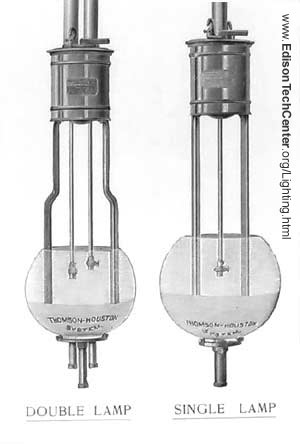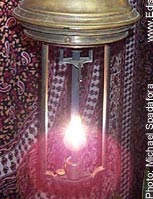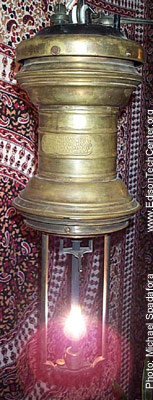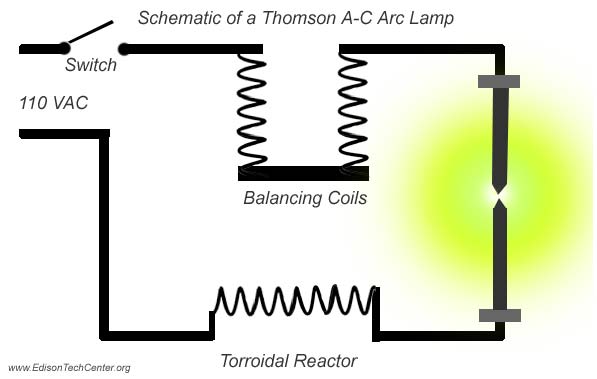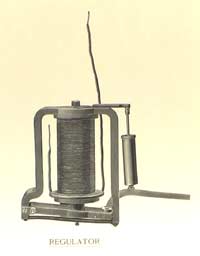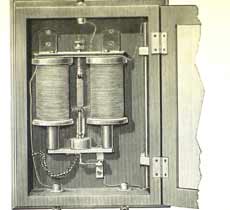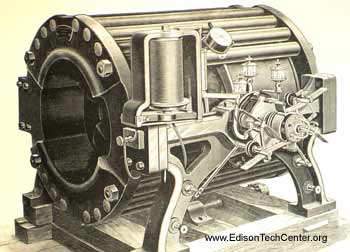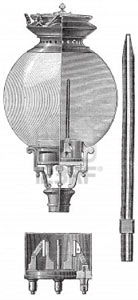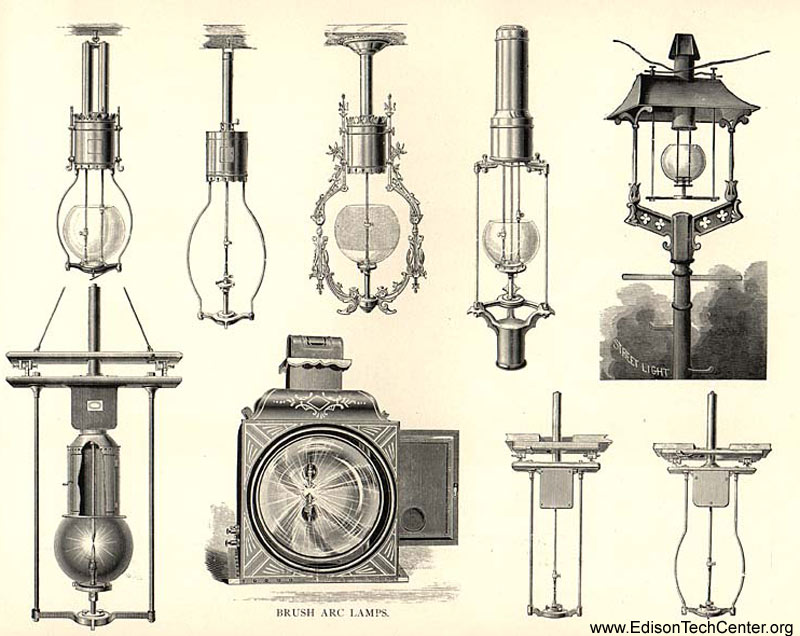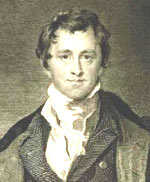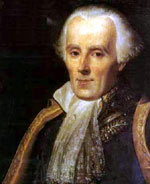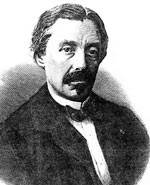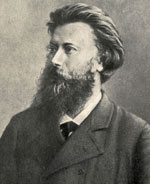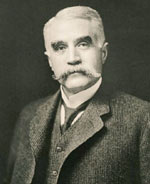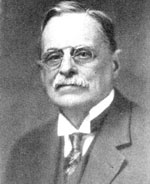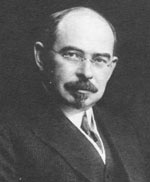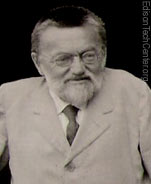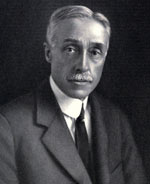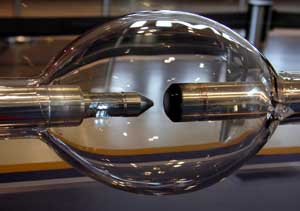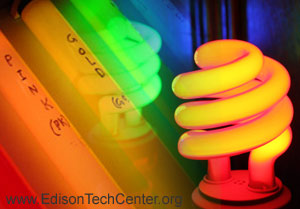Arc Lamps
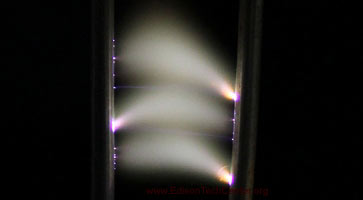 |
The First Form of Electric Light
History of the Carbon Arc Lamp (1800 - 1980s)
All credits and sources are located at the bottom of each lighting page
Introduction & Statistics
Design Variations
Timeline
Modern Day Ancestor: Xenon Arc Lamp
|
|
|
Disadvantages:
-Carbon rods had to be replaced after a short period of time, this became a full time job in a city
-Produces dangerous UV-A, UV-B, and UV-C rays
-Created a buzzing sound and flickering as the light burned
-Created large amounts of RFI (radio frequency interference)
-Dangerous: it was a fire hazard, many theaters burned as a result of the excessive heat or sparks emitted, also the unenclosed lamp could easily electrocute or severally burn technicians.
-Carbon Monoxide emissions (bad for indoor use!) It only worked in the past because buildings were poorly insulated and fresh air could enter. Some of today's energy efficient buildings are almost air tight.
|
|
|
| 1. How it Works | 2. Variations & Uses | 3. Developments, Timeline & Inventors |
Below: 4 Minute Video on the Carbon Arc Lamp. Youtube must be accessible on your internet server for this to work.
The lamp is a spark or electric arc through the air between two carbon rods. The rods must have a gap in between of the right size. If the gap is too big than the arc will flicker more or may go out, if the gap is to narrow than it will produce less light.
The first carbon was made of charcoal (made from wood). The carbon substance is vaporized in the high temperature of the arc (around 6500 F, 3600 C). The carbon vapor is highly luminous (very bright) and this is why we use carbon in the lamp. This light is much more useful and bright than that of an arc between steel like in the Jacobs Ladder example photo below. The carbon vapor and normal air ionizes easily which helps make light. When the atoms of the carbon and air ionize it means they give up and take on electrons. This happens as electric current passes from one electrode (in this case one of the carbon rods) to the other electrode. Lighting ionizes the air that is passes through.
Below: A Jacobs Ladder, a common science teaching toy shows the electric arc through air. The arc is not very bright compared to a carbon arc lamp. The study of the behavior of the electric arc through gas is covered in the field of plasma physics.

Sparks, Mercury, Containment and Buckyballs
The carbon arc lamp once lit produces a useful bright light, however undesirable aspects exist. The lamp produces hot sparks and buckyballs which can and have caused fires. Early arc lamps used in department stores were a concern because hot sparks would randomly fall to the floor, on people, or on merchandise. The lamp also produces UV-A, UV-B, and UV-C light which are harmful to both the eyes and skin. Early arc lamp makers didn't know about UV light yet, but did realize that diffusing the light made for better quality light.Early arc lamp inventors created glass globes to fit around the lamp. Some globes were made of opal glass to diffuse the light and the silica glass blocked some of the harmful UV rays. Early globes often had an open top to allow heat to escape (see the various designs near the bottom of this page here). These protective globes are not to be confused with the "enclosed carbon arc".
The enclosed carbon arc was an arc lamp which completely enclosed the electrodes. The upper electrode was fed through a hole in the top. This enclosed lamp prevented oxygen from easily reaching the arc. With less available oxygen the arc burned slower and the lamp life was greatly improved.
The Mercury Arc: Some early visionaries discovered that by adding mercury into the enclosed arc lamp a green light was created. This was an early predecessor to the mercury vapor lamp. When the hot lamp struck it vaporized the mercury stuck to the inside of the bulb, this helped produce better light with a higher efficiency. The mercury arc was not popular and did not take over the market because it had an ugly greenish color. It did get used as a germicidal lamp due to its increased UV emission. We do not call this a "mercury vapor lamp", the "mercury vapor lamp" as we know today uses a sealed low or high pressure bulb/tube and the two electrodes are made of metal or tungsten, not carbon sticks. We have a separate page for this more advanced type of lamp here.
Buckyballs are made of Carbon-20 through 60. Buckyballs are giant molecules which border on being a 'solid' not a small particle. These large molecules behave strangely compared to normal molecules. There are up to 240 electrons total, they act collectively when excited and oscillate back and forth forming a surface plasmon. They are created in natural soot and charcoal which is part of the process of making the carbon rods for the lamp.
|
|
|
Components of the early arc light system:
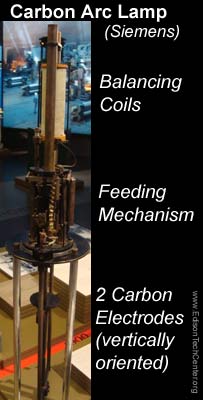 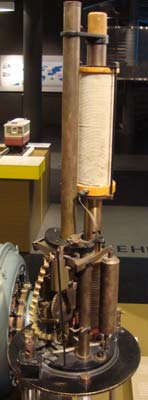 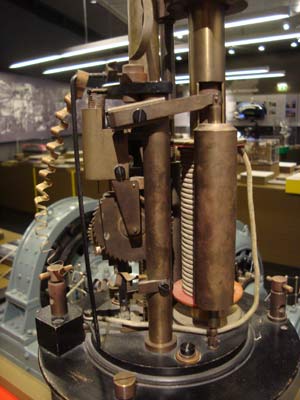 |
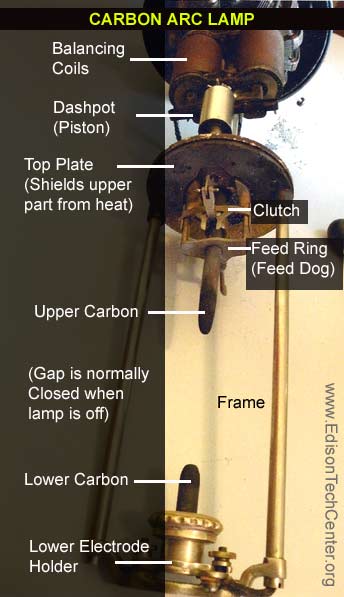
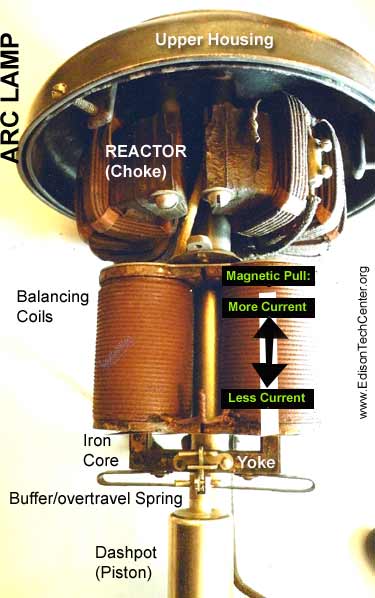
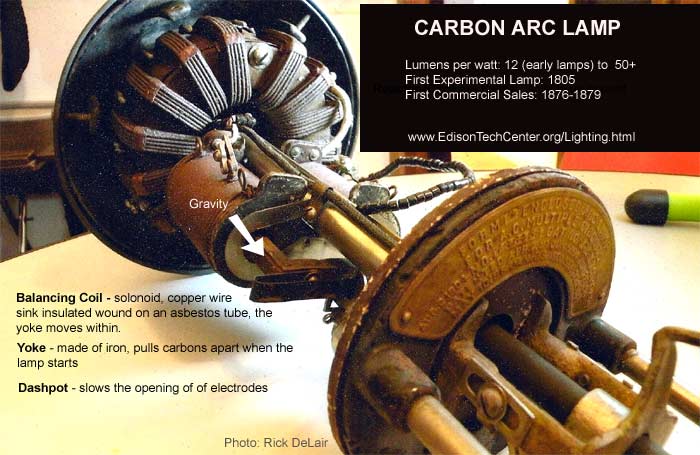
A Current Regular developed by E.W. Rice Jr. allowed more lights to be places on one circuit
A Controlling Magnet developed by Elihu Thomson
Thomson's dynamo for sale in the 1880s, used in Philadelphia
Further Improvements:
In the quest to make better arc lamps which lasted longer and therefore required less trimming (the term for adding new carbon rods) engineers experimented with adding compounds to the carbon rods. William Wallace who happened to be from the copper towns of Connecticut developed a copper plated electrode with carbon in the center.The Flame Arc Lamp:
Until the 1890s most of the light emitted by the lamp came from the glowing carbon tips. The flame arc lamp produced more carbon vapor which made a flame that produced most of the light. The flame arc lamp lasted much longer, now a lamp could last for days without trimming.In 1904 Steinmetz used magnetite carbons to make much longer life. The carbon rod was mostly made of magnetic oxides of iron. Sometimes titanium carbide and titanium oxide were added as well. This lamp was a flame arc lamp type.
How to build your own carbon arc lamp and more details about how it works
The arc lamp is not used today, however it is extremely important due to its role in history. So we have more material here than on the other lamp types.
A.) Growth of the Arc LightB.) Timeline
D.) Inventors List
First Installations in Europe:
The first work with arc lamps was in the laboratory until the 1870s. Most of the work on arc lamps occurred in Europe during the pre-1870s period. The main reason why arc lamps were not on the streets until that time is because a reliable dynamo was needed to produce DC power. Prior to 1870 most people used batteries to power the arc lamp. It was a difficult sell to clients because the batteries were not reliable, very expensive, and had a short life. Gramme's dynamo set off a race in 1869. In only a few years many inventors had unique dynamo designs of their own, and it took a short time to adapt the dynamo to work with arc light systems. Finally the arc light was ready for commercial sales.
Left: the Yablochkov (Jablochkoff) candle was the first product, it had two carbon rods side by side (see illustration) separated by a plaster, it burned down from the top with the arc begin kept at the idea gap width. This was a way to get around the problem of feeding two carbon rods together in the regular lamp model. It was a simple operation to replace the rods when finished. The device produced an unsteady light that would range from dark purple to bright white. Sometimes it went out, which would lead to the entire series of lamps (up to six) going out. But it was a important step and the first commercially successful electric light.
The first installations were small ( 1-12 lights). The first installation was the lighting of the Mill of Heilmann, Ducommun, and Steinlein at Mulhausen, France (1875). Another installation was the lighting of La Chapelle railway station (France). Paris holds the record for the first street lighting in 1875. The Thames Embankment (London) was lit in 1878 (Using Jablochoff Candles). Despite these installations a lot of work needed to be done. Understanding of electric power was crude, and there was no way to measure power, or adequately control power systems to get more performance.
In 1878 Lord Armstrong installs the first residencial electrical lighting at Cragside House in Northumberland, England. The house also was probably the first home with a dedicated hydroelectric power house. Learn more about it here.
First Installations in North America:
Charles F. Brush developed the first commercially successful arc light systems in North America in Cleveland, OH (at Public Square 4/29/1879). His design of arc light AND dynamo (a dynamo generates DC power) was proven to be the best of several experimental systems by different inventors at an exposition at the Franklin Institute in Philadelphia in 1977. This event also inspired E.W. Rice Jr., Edwin J. Houston, and Elihu Thomson to create arc light systems of their own. When Thomas Edison traveled through Ohio, he was inspired by Brush's arc light work and he initiated his own electric light work. Brush improved not only the ability to add more lights to the circuit, but developed the Brush Dynamo. This dynamo was a monumental achievement in power generation.
The Electric Light's first commercial success, and happier whales.
In 1880 authorities in Wabash, Indiana discover that the Brush electric arc light system for it's streets would cost $800 less per year than gas lighting. Also they stated that they would get greater volume of illumination. This was the beginning of the revolution across the world to switch to the electric light. By proving to be economically better than oil and gas the future was set. This also stopped the complete eradication of certain whale species that provided the oil, these whales were already close to extinction in the 1880's due to over-hunting.
Gas used in lights was made from coal. The coal was shipped to cities, and cooked in a crucible, a gas resulted that supplied the town's light systems. This process was very dirty, it produced massive amounts of carbon monoxide and a coke remains that was then shipped out for other uses as dirty combustible fuel. The electric arc light eliminated the need for plants that produced urban localized pollution.
The Thomson-Houston Company
Elihu Thomson founded the Thomson-Houston Electric Company which later absorbed the Brush Electric Company. E. W. Rice Jr. helped develop a voltage regulation system along with Thomson's lighting arrestor system, these combine with Brush's work made the most successful arc light system in the world. You can see the documentary on this early period of history via our E.W. Rice documentary.
Growth of the Electric Light:
1890 - There were more than 130,000 arc lamps in use in the United States.
Today the evidence of the great number of carbon arc lamps is mostly gone. Most of the bodies of the lamps were melted down for scrap for World War 1.
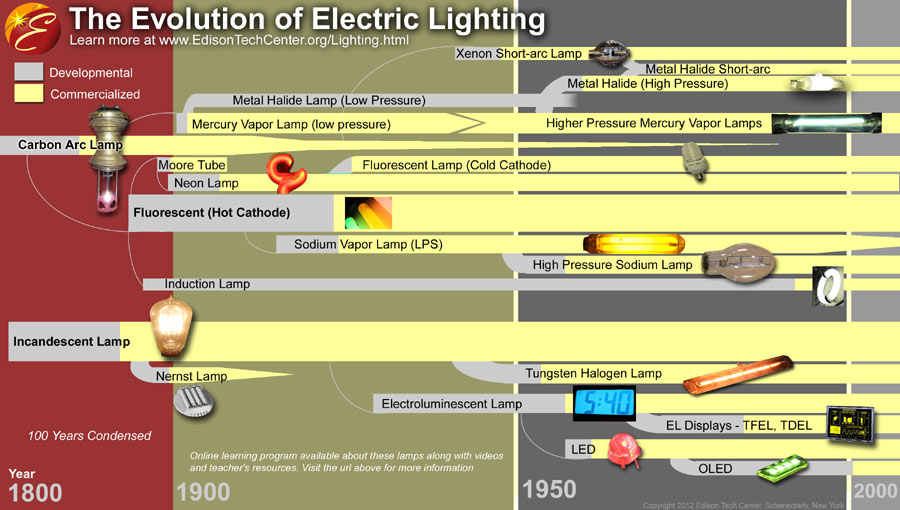
1705 - Francis Hauksbee (France) builds a gas discharge lamp using an evacuated glass tube charged with static electricity. The tube glowed faintly.
1800 - Volta (Italy) develops the first battery in the western world, this immediately sparks a period of testing of electricity and discovery from Russia to England.
~1800 - Vasily Petrov (Russia) first publicly describes the phenomena of the electric arc. The year of this is not yet confirmed.
~1800 or 1809 - Sir Humphry Davy (England) - used charcoal sticks and batteries to make the first experimental arc lamp, the year of this is under debate.
1840s - Jean Bernard Leon Foucault developed mechanisms for feeding carbon rods to make an arc light last longer.
1844 - first major public demonstration of an arc lamp in Paris
1875 - Pavel Yablochkov - Yablochkov Candle, a form of arc lamp is developed, this lamp is reliable and uses two carbon sticks side by side, which solves the problem of figuring out how to keep the gap constant despite the burning away of carbon. Mechanical feeds were not sophisticated enough yet to be reliable. The first street lights are installed in Paris. The arc lamp enters the commercial stage.
1876 - Charles F. Brush, Wallace, Gramme - developed more advanced arc light designs and dynamos to go with it.
1877 -Charles F. Brush develops a better carbon stick by using 0.03% ash and electroplating the rods with copper to slow the stick's consumption.
1875 - Avenue de l'Opera is lit in Paris by Jablochkoff candles
1878 - Lord Armstrong installs what may be the first electric home lighting
1879 - Brush makes the first public lighting in the US at the Wanamakers department store in Philadelphia.
1879 - Brush developed the "Brush System" in which he could run a number of lights in series. Prior to this systems had one or a few lights. Inventors couldn't understand why electricity changed its properties by adding more lights, Brush understood the drop in voltage and current although he still had no way to measure electricity. It was later in the 1880s the importance of measurement allowed for better and more complex electrical devices.
1879 - William Wallace improves the life of the carbon rod with a design using copper and other ingredients.
1879 - Niagara Falls first lit by the electric light with 16 Brush arc lamps.
1879 - Elihu Thomson built a system that could handle up to 9 arc lamps in series with 10 Amps of current.
1880s - Elihu Thomson, Thomas Edison, Frantisek Krizik, Nikola Tesla, E.W. Rice - all improved the arc lamp by improving the carbon composition, mechanical feed device, and other components.
1890s - After the end of the War of Currents at Frankfurt, Germany in 1891, AC systems were built across the world from Argentina to Sweden within 10 years. Arc Lamps were adapted to run off of 110 and 220 Volt systems.
1904 - Charles P. Steinmetz improves the lamp by replacing the carbon electrode with magnetite, a type of iron ore. Lamp life shoots to 600 hrs or 30 hrs per inch of electrode. At the same time carbon rods only had a max life of 125 hours (for the average carbon rod refill length)
1915 - Elmer Ambrose Sperry develops a carbon arc spot light, first used in Navel applications.
1900-1980s - The carbon arc light is used for intense spot lights and some projectors, and is mostly replaced by xenon and metal halide lamps. The newer lamps are superior in that they do not give off open sparks due to having their arcs placed in a glass envelope, and they do not burn up quickly as the carbon sticks used in carbon arc lamps.
The
many types of arc lamps offered by Charles Brush, taken from his company
catalogue
The carbon arc lamp was first used for street and factory lighting due to its extreme brightness which could easily flood a large area. It was used in early film production but proved to be dangerous to the actors. The arc lamp was used a projector light source for some time. This light did cause fires in theaters due to the open sparks.
The carbon arc lamp was replaced by the incandescent lamp starting in the 1880's. It was still used for street and factory lighting into the early 1900's. Elmer Ambrose Sperry developed a spotlight which was used by NAVY ships in 1915.Most of the hundreds of thousands of arc lamps and fixtures were scrapped for World War I. Some fixtures that remained in factories were gutted out and had sockets placed in them for the Mazda incandescent bulb.
The End of the Carbon Arc Lamp Era
Carbon arc lamps were being phased out after the 1910s. For general lighting the lamp was replaced by the 1920s and 30s in most cities. The lamp continued to be used for spot lights, film production lighting and film projector lamps. Most of the remaining carbon arc lamps ceased production by the 1980s due to the improved performance of the bright short-arc xenon and metal halide short-arc lamps. The new gas discharge lamps use a glass/quartz bulb filled with a nobel gas and other additives, they had longer life and more efficient than the carbon arc lamp. In the new lamps gas is ionized and free electrons smash into the additives (like metal halide) giving off photons with the same or better quality white light.
The carbon arc lamp still exists in an extremely limited application. It is used for a color fastness test of textiles. The lamps are part of testing machines that use the lamp to make UV light in a controlled environment. See one of these machines as part of the this list at Shinyei Corporation.
Many innovators worked on this lamp and we will mention the most prominent here with a photo. The fact is there are far too many to show in this one page, but if you are interested there are entire books about the early development of the arc lamp. Many look back to the arc lamp days with a bit of romanticism. At the bottom of this list we will list some others not mentioned in the main list, however the main list with photos covers very important people in the world of the arc lamp.
1800 Sir Humphry Davy discovers the carbon arc in England while Vasily Petrov discovers it in Russia. The exact year of discovery is a matter of debate, it could be 1800 or 1802.
England1800 Vasily V. Petrov discovers and demonstrates the carbon arc. Both Petrov and Davy used simple systems attached to primitive batteries.
Russia1840s Jean Bernard Leon Foucault develops a mechanical feed device for the carbon rod, this is an important step towards a functional, commercial product. France
1875 Pavel Yablochkov had developed the Yablochkov Candle which was the first reliable carbon arc lamp and was used in Paris. He also developed power regulation systems, developed multi-lamp AC power circuits, and was the first commercial success in electric lighting. See his invention above. Russia/France
1879 William Wallace develops a copper plated carbon electrode and carbon doped with certain materials, his work resulted in a longer lasting carbon, he was one of many who were working on extending carbon life by adding materials to the carbon composition.
Connecticut, USA1879 Charles F. Brush develops every part of the electrical system from new lamps to better dynamos (DC) and power conditioning. He becomes a commercial success with many installations in US cities.
Cleveland, OH, USA
Lynn, MA, USA1870s-1890s E.W. Rice Jr worked with Elihu Thomson, improving many parts of the arc light system both in DC and AC power.
Schenectady, NY, USA1904 Charles P. Steinmetz develops an arc lamp with magnetite electrodes. This extends lamp life from 125 to 600 hours while only sacrificing a small amount of brightness. This meant that arc lamps needed to be "trimmed" (carbon replacement) with the same frequency as incandescent bulbs of the time. Later Steinmetz also invented the metal halide lamp.
Schenectady, NY, USA1915 Elmer A. Sperry developed a high intensity spotlight up to 2 billion candlepower. Sperry's spotlights became vital for naval and air warfare during WWI and WWII.
Schenectady, NY, USAGreat engineer and arc lamp innovator Elihu Thomson mentions a few other names of important developers: Wallace Farmer, Weston, Wood, Hochhausen, and William Stanley who developed Westinghouse's arc lamp knowledge.
There are MANY others who helped develop the carbon arc lamp in many nations of Europe and North America between 1805 - 1915. Above we have listed the most prominent names, even so it was difficult to choose. History is a complex matter, the deeper you dig, the more ambiguity you find. If your interested in getting more detail about the fascinating history of the arc lamp we recommend book: A History of Electric Light and Power by B. Bowers and Men and Volts by John Hammond
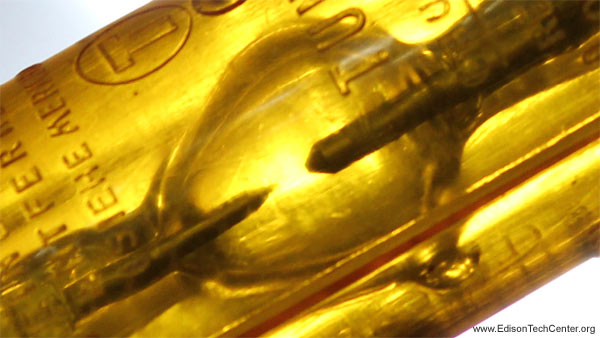
The carbon arc lamp was replaced by the xenon short-arc lamp for many applications. The lamp makes an arc through ionized xenon gas in a very high pressure bulb. The high pressure give the lamp high efficiency. The light is highly intense and close in frequency to that of sunlight.The xenon arc lamp has the advantage over carbon arc lamps in that it does not need to be supplied with anything(like the rods), it does not flicker, it is more compact, and is less of a fire hazard because of having the arc enclosed.
The lamp is not safe for technicians, the extremely high pressure (440 psi / 3040 kPa) makes it similar to a small grenade if broken. Glass and metal shrapnel have killed and injured people who dropped or ruptured the lamps on installation. Injuries extend to the less-than-intelligent playing with the lamps (see the carnage here on youtube).
Ratings: 900 W - 15 kW
Materials: Tungsten, molybdenum, ultra pure synthetic fused silica (Suprasil), Invar alloy
Inventor: please contact us if you know
History:
The lamp was invented in the 40s and was in commercial use by the 1950s as a film projector lamp. The lamp was developed by Osram. If you know the inventor/s of this bulb and have a photo please let us honor them by contacting us.
|
|
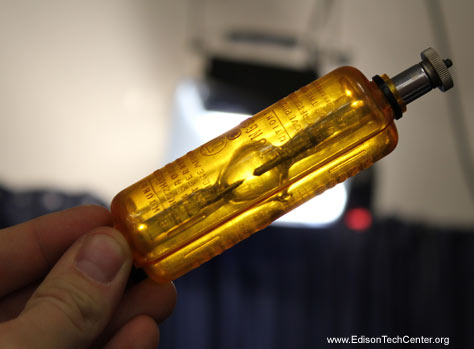 |
See another video of different sized xenon short arc lamps here (this video is not an Edison Tech Center video so the resolution/quality is limited).
Lamps are presented in the order of chronological development
|
Previous: Basics on Lighting |
Next:
Incandescent Lamp 1802
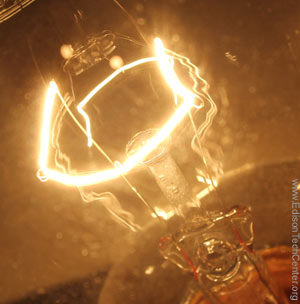 |
 |
|
Arc
- Incandescent - Nernst
- Neon - Mercury
Vapor - Sodium Lamp - Fluorescent
- Halogen - EL
- LED - MH
- Induction
|
Donate to keep us online
More Technologies:
COMMENTS?
Help us edit and add to this page by becoming a ETC volunteer!
Give us feedback on this and other pages using our Facebook
Page
Written by M. Whelan with additional research by Rick DeLair
Please contact us if you are a historian and wish to correct or improve this document.
Sources:
The General Electric Story: A Heritage of Innovation 1876-1999, 1999,
by the Hall of Electrical History Publication
Wikipedia, www.debook.com: "A Short History of the Electric Light"
by Frank Andrews
"Men
and Volts" by John Hammond 1941,
illustrations part of the Thomson-Houston catalogue, at the Schenectady
Museum collection
Wikipedia "Super Trouper" light, Xenon Short-Arc Lamp
The Iron Trade Review. August 1909
Carbon Arc Basics by Samuel Goldwasser and Don Klipstein 1996
The Electrician, June 17, 1904
The
Term "Subdivision of the Electric Light" by Elihu Thomson. Electrical
World. 1922
The Subdivision of the Light by Unknown
"Development of Arc Lighting" by Elihu Thomson. Electrical World
Vol. 80 No. 11 Sept 1922
The Edison System Forty Years Ago by Etienne de Fodor. 1921
Photos:
Edison Tech Center
Whelan Communications
Schenectady Museum
Michael Spadafora (Arc Lamp Collector)
Atlant
Photo Use:
Photos may NOT be altered in any way except for resizing.
You may use the photos for educational purposes, however you may not edit
the photo or remove the
attribution tags (typically the tags say www.EdisonTechCenter.org or Copyright....
Edison Tech Center).
You must attribute the Edison Tech Center in your credits or references
if you use the photos.
Profit making entities such as Discovery Networks, ABC, etc. must request
permission and accept terms for using photos.

